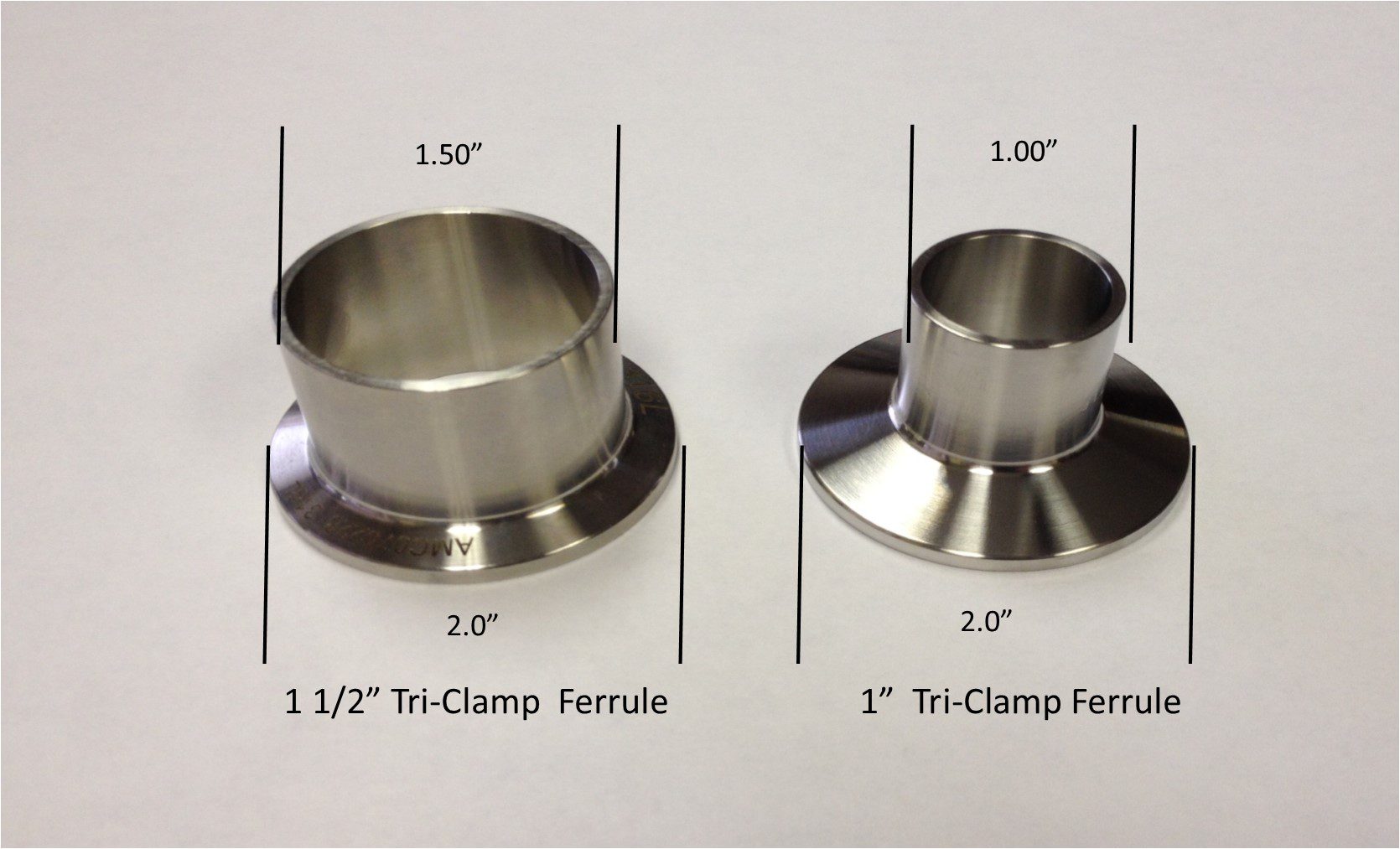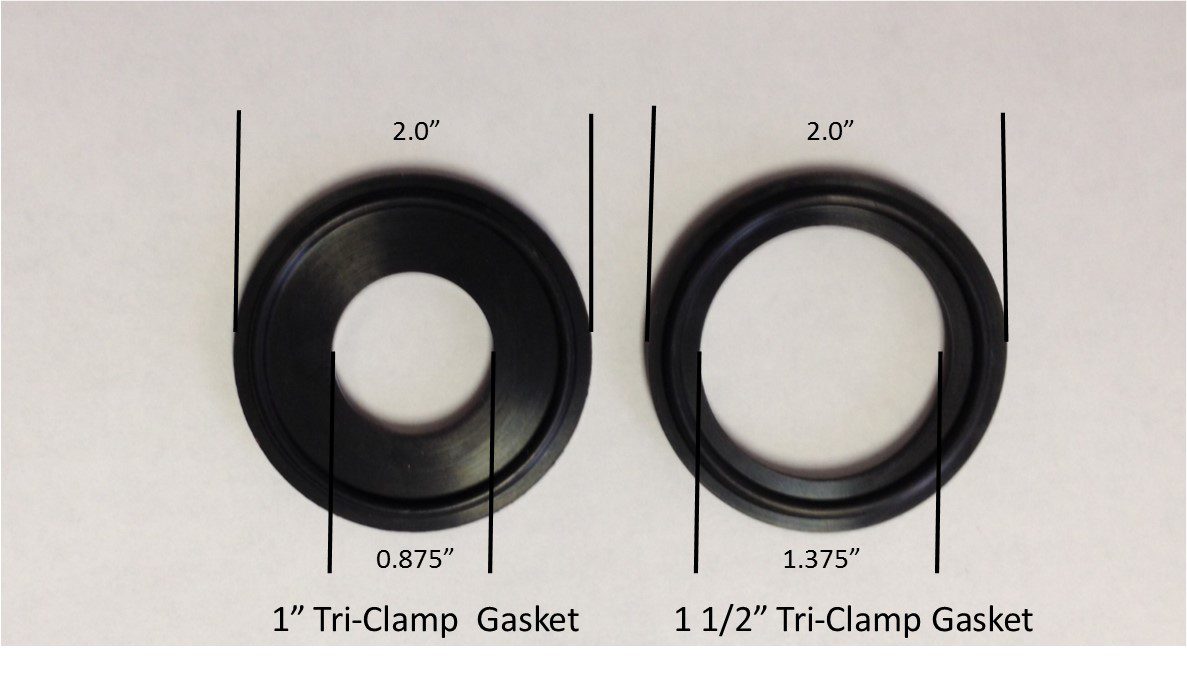What are the Most Common Mistakes We See When People Try to Order Sanitary Fittings? Determining the Difference Between 1” and 1 ½” Tri-Clamp Fittings

Determining the Difference Between 1” and 1 ½” Tri-Clamp Fittings—One of Life’s Great Mystery’s
When the Tri-Clamp sanitary union was invented, the original sizes were 1 ½” through 4”. Each size had its own unique clamp and gasket. At some point it was decided that a 1” Tri-Clamp union should be added. But instead of designing a new clamp and gasket, they decided to use the 1 ½” clamp and the same profile gasket as the 1 ½” but with a smaller hole in the middle. The result? A joint that is arguably not as hygienic as the other Tri-Clamp joints and seemly an endless amount of end user confusion. We will address the hygienic issues in a future post. Today, we will attempt to bring clarity where confusion reigns.
Like all sanitary fittings, Tri-Clamp fittings are measured in tube OD. That is the outside diameter of the tubing itself, not the face of the Tri-Clamp ferrule. So if you put a 1” and 1 ½” Tri-Clamp elbow side by the, the outside diameters of the clamp ferrule faces will both measure approximately 2”. But the OD of the tube sections will measure 1” and 1 ½” respectively. It seems pretty simple but this throws quite a few people off. We have also had people calling for a 2” Tri-Clamp fittings when they wanted 1” or 1 ½” because they are measuring the outside diameter of the flange and not the tube.
The easiest way to tell 1” and 1 ½” Tri-Clamp gaskets apart is to measure their inside diameters. Their outside flange diameters are identical, both about 2”. The ID of a 1” Tri-Clamp gasket will measure about 0.875” vs. 1.375 for an 1 ½” Tri-Clamp gasket. You can fit a 1” Tri-Clamp gasket into an 1 ½” union, but you don’t want to. It will create a dam in the line and restrict the flow and render that section on piping un-drainable. Conversely putting a 1 ½” Tri-Clamp gasket into a 1” union will leave a dead pocket in the piping that will not clean or drain.
You have got to be kidding me, they did the same thing with ½” and ¾” Tri-Clamp fittings?
Yes they did. If you can come to grips with the 1” vs. 1 ½” issues, we can move on to their smaller siblings, the ½” and ¾” Tri-Clamp fittings where the same phenomenon exists. Both use the same clamp but different gaskets. You can get a ½” gasket to clamp into a ¾” Tri-Clamp union and vice versa, but you should not for the same reasons we explained for the 1” and 1 ½”. To determine the fitting size use the same principles we went through above, measure the OD of the tube, not the ferrule OD.
Hopefully this post clears up some fittings sizing issues. As always, if you have any questions on this or any other topic regarding sanitary process equipment please contact us. We are here to help.
Holland Applied Technologies









